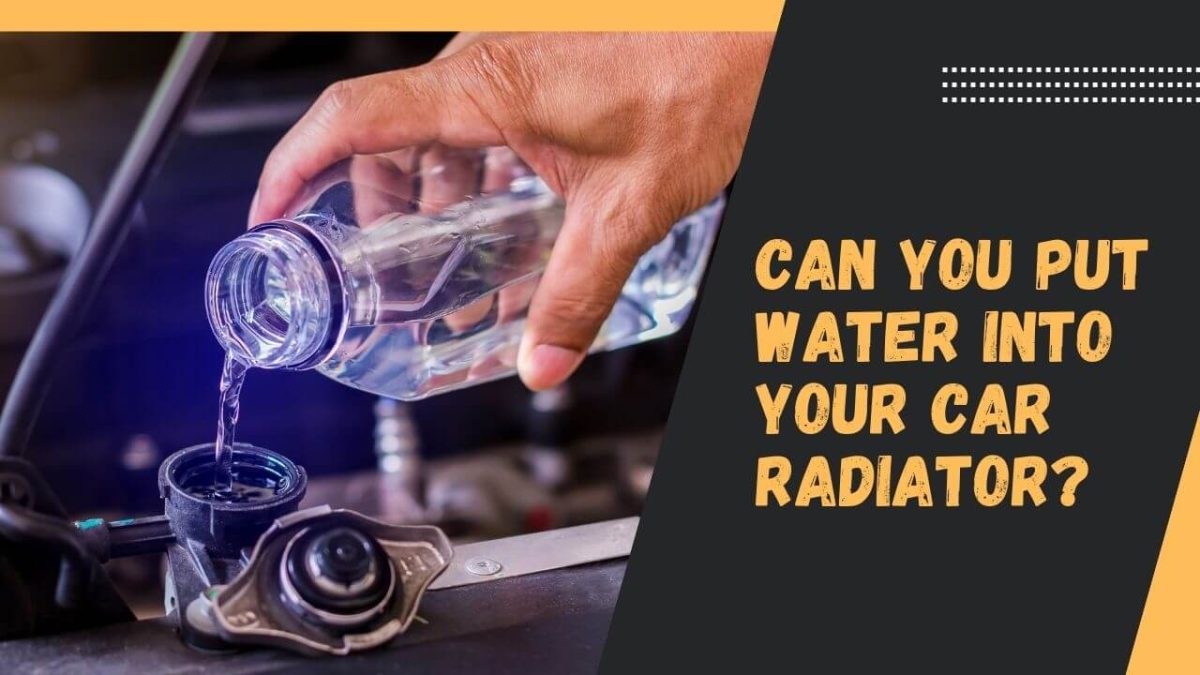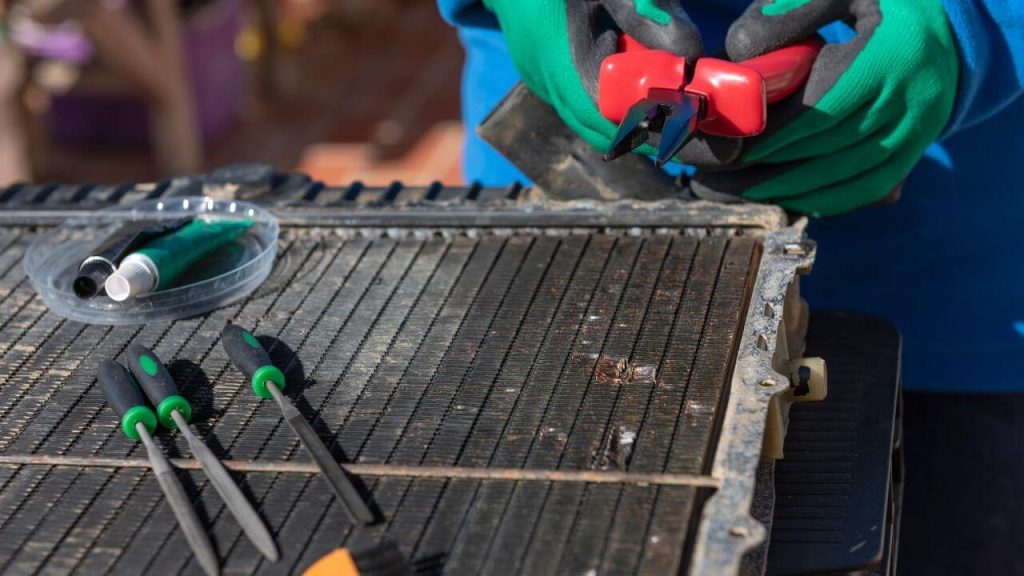September 09, 2022
Have you ever been in a situation where you thought that “Can I Put Water Into My Car Radiator”? if yes, then read out this blog to get your answer.
Summer is about to come, and imagine you’re on your journey to the beach for a long-awaited family vacation. Everything is well, and you are just a few hours away from the distance when the unexpected happens. As the thermometer reading on your vehicle begins to rise, you sense something is wrong. Let’s discuss it deeply and take a real-life example: Once upon a time; there was a family going on vacation. Suddenly they noticed the fumes coming out of the car.
A quick look under the engine revealed a shortage of coolant in the cooling systems. While the local store within a short walk does not have coolant, the store clerk offers several liters of water to top out your vehicle’s cooling system. Then they put water into the car radiator and the car now seemed alright. Now, you must be wondering, can I put water into my car radiator instead of coolant? Let us discuss the same in this blog.
A lot of people might not be aware of what a radiator is. Let us now understand this in detail.
What is a car radiator?
A radiator is the heart of a vehicle’s air conditioning system. Its main duty is to monitor and adjust the temperature of a vehicle’s engine to protect it from heating. A vehicle engine gives the required power by burning gasoline and creating energy from its numerous moving components. This force and motion cause the generation of a large quantity of heat all over the engine. It’s necessary to evacuate such heat from its motor while running to avoid heating, which will cause catastrophic damage. If your vehicle radiator is failing then it can harm your engine.
A car radiator assists in the elimination of excess heat in the motor. It is a component of the engine air conditioning system that contains a liquid car antifreeze, antifreeze hoses, a thermostat, and a fan that checks antifreeze temperature. The antifreeze runs into the radiator throughout the pipes and motor to remove excess motor heat and return to the radiator.
As the hot liquid travels over thin metal fans in the radiator, the steam from the car coolant releases into the outside air. Cool air travels through the grille in the radiator to help in this process, especially once the vehicle is stationary. When the automobile is idle in a congested area, the system’s fan blows the wind to cool the hot coolant and exhaust the warm air. The coolant flows through to the engine and then after passing through to the radiator. This heat transfer cycle is ongoing to maintain the engine’s internal temperature and protect it from overheating.
A car radiator is essential since it is the primary means through which your engine distributes heat while running. A faulty radiator can cause considerable engine damage due to overheating– in most cases, the blowing fumes on the side of the street are due to faulty radiators!
Can you use water instead of coolant?
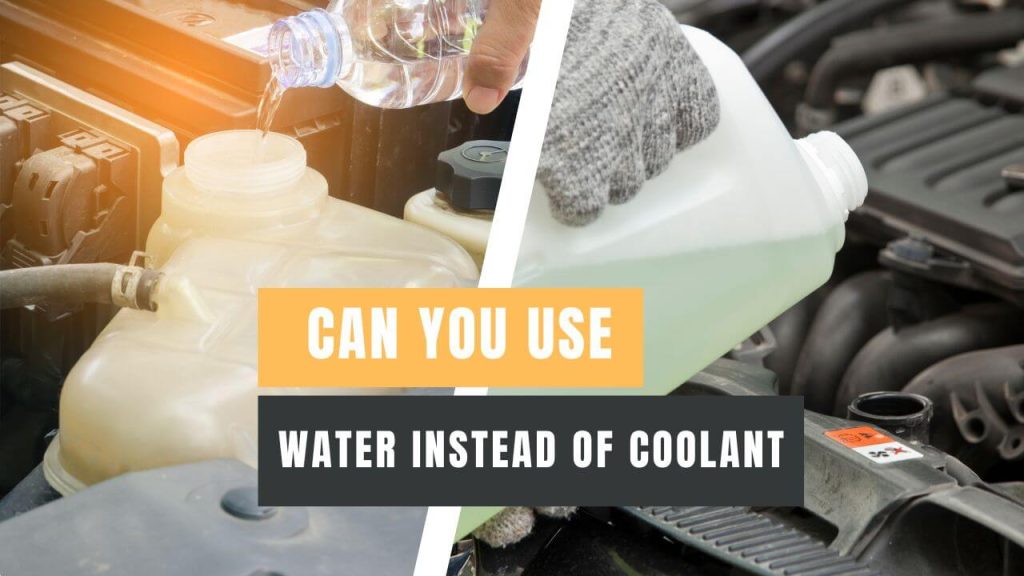
Can I put water into my car radiator? This is a commonly asked question in the automobile industry. So let’s discuss the answer you have been searching for a long time. Most individuals do not keep the extra coolant in their cars. So what if you only have water access and need to fill it?
Have you ever used water as a coolant instead of antifreeze in your vehicle’s coolant reservoir? Or maybe can you mix the coolant with water and use it in the radiator? So the simple answer is that it is possible to use water as a coolant instead of antifreeze for the engines, but only temporarily. Sure, water is less expensive and may help avoid overheating, but coolant is helpful for more functions than that. It requires adequate cooling system operation.
Combining water with coolant is a regular procedure only when the antifreeze isn’t dilute, or only tap water is permitted. In the long term, you should not combine ethylene glycol coolant with water because when its primary elemental analysis changes, it loses many of its properties, such as heat transmission, ideal viscosity, detergent capability, and corrosion prevention. As a result, the foaming procedure starts. It is very hard to take out the cooling effect from foam subsequently.
Furthermore, this situation is only appropriate for a short period during the summer, when temperatures are above freezing. Additionally, if it is scorching outdoors, the water might boil away.
Let us assume that you have used water instead of coolant. When you reach your destination, you must clean the cooling system and replace the water with coolant.
Hence, you must use water in the radiator only in an emergency.
Moreover, ensure that you should not drive long distances with water in your radiator.
How to Put Water in a Car Radiator?
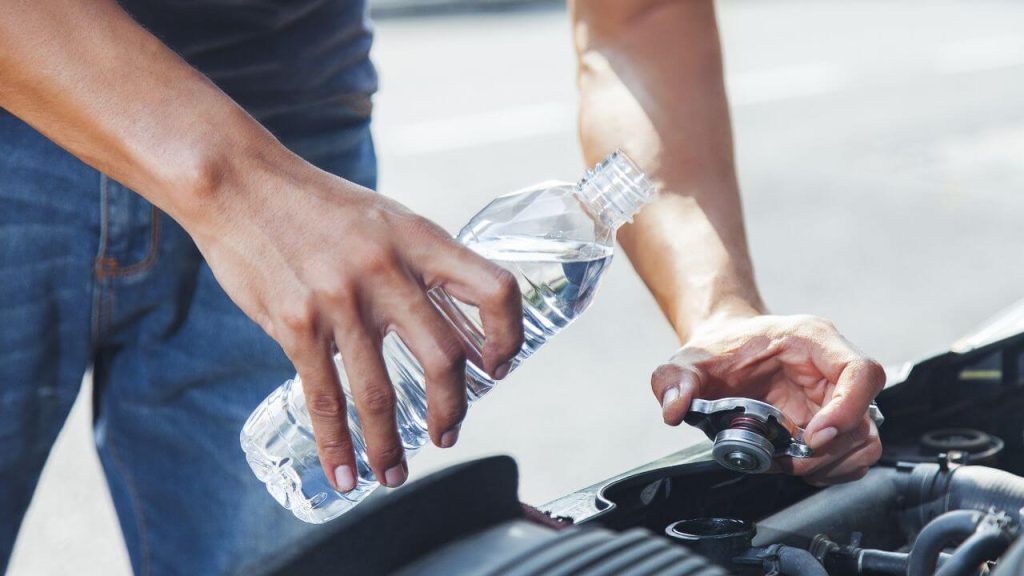
While it is preferable to put a mixture of antifreeze and freshwater in our radiator, freshwater alone can suffice in an emergency. However, it is critical to include it correctly. Here’s how to survive on the water until you can reach a service station or garage.
First and probably most important, you must park your vehicle in a secure location and wait a few minutes for the engine to cool. The engine cooling procedure may require 5 to 15 minutes in the cold and 30 to 40 minutes in the summer. Touch the engine carefully to check the temperature. It should be cool enough to touch. When you touch it, it should not be steaming.
Second, find your vehicle’s radiator. The automobile radiator is often located right below the grill and ahead of the engine. Radiator caps on newer automobiles are labeled. Such radiator caps are usually more oval than the other rounded caps in the engine area.
Remove the radiator cap after identifying the radiator, and make sure the engine isn’t hot before removing the radiator cap. The radiator contains pressurized liquid that takes some time to cool. Remove the lid when the engine cools. Use anything handy in your car throughout the uncapping procedure, such as rags, an old t-shirt, or towels for added security.
It’s time to fill your automobile radiator with water after removing the radiator cap. If your vehicle lacks an overflow tank, you can fill the radiator directly.
There is also an overflow tank in the engine compartment. This tank is made up of plastic. You must fill this tank with water. This tank has the highest (MAX), and lowest (MIN) marks. If you drop water into the tank while gripping a bottle of water, the radiator water level may be near the lowest.
Replace the overflowing tank and radiator caps after adding water to a particular amount.
Mix the antifreeze with the emergency freshwater in the radiator to protect your motor and radiator from harm. Start the car and drive to the nearest store to get coolant.
Where do you pour water into the radiator?
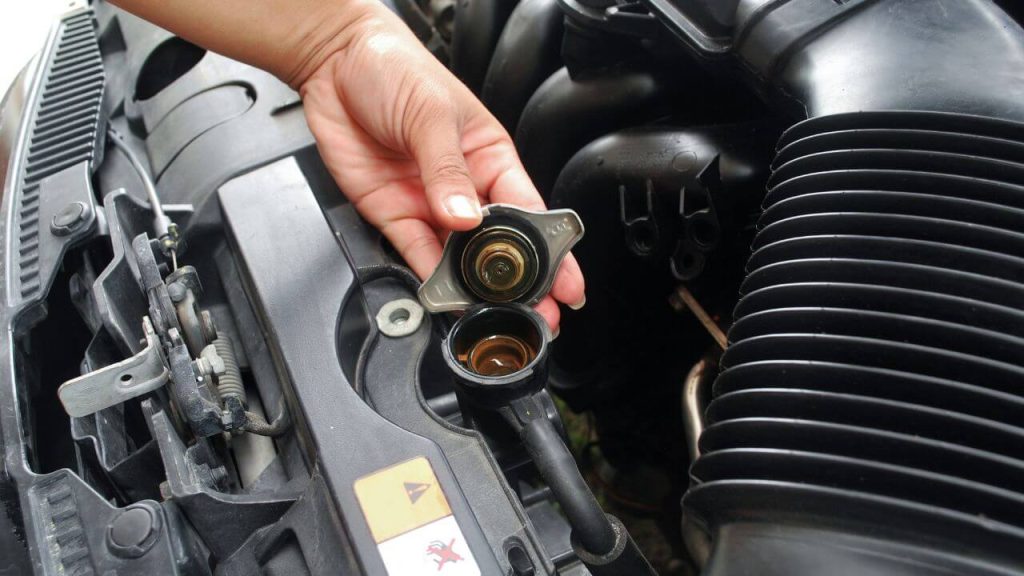
Open the antifreeze reservoir cap once the engine has cooled. Reading the marks on the tank’s side allows you to peep inside or check the level.
If extra coolant is required, follow the manufacturer’s instructions and mix the antifreeze with distilled water. You may skip this step if you buy a pre-mixed car coolant.
Fill the overflow coolant reservoir partially with coolant since this fluid increases when it becomes heated. If your car lacks an overflow tank, you can pour it directly into the radiator, but do not exceed the “full” mark.
Replace the cap and restart the engine. At this time, you should also check the radiator and pipes for leakage. Maintaining your cooler with the proper fluid ensures that your engine operates smoothly.
How long can you drive with water in the radiator?
Water serves as a cooling agent. Although it isn’t perfect, it does the job. It will also function for longer than a few days. And it’s more likely an issue of time than of distance. Even if you reside in a warm area, utilizing only freshwater for long-term use is not advisable. If you only use water, it might create internal corrosion, overheating, and other problems with your engine.
You can drive your automobile generally for one week with freshwater antifreeze in the radiator. Though it varies depending on where you live, what car you drive, and how much driving you do, you can conduct your typical daily tasks for roughly a week.
Conclusion
Whenever your engine is overheated, the antifreeze overflow tank is significantly less or empty, and there is no other alternative; you can add water to your automobile radiator.
You should only do this if you’re only going a short distance, and you’ll want to ensure that when you arrive, the radiator has been cleansed and refilled with the proper coolant/water ratio.
If you see that your engine’s temperature is increasing, you must stop immediately. Allow the engine to cool before inspecting the coolant overflow reservoir. You must add liquid to your car if it is low or empty.
Now that we’ve answered “can I put water into my car radiator?”, let’s understand the ratio of water. Well, while it’s best to add a 50/50 combination of antifreeze and freshwater (or a pre-mixed antifreeze) if you must continue driving, you can add freshwater to the radiator to take you there. Just follow these steps to add the water into it first.
You have to stop the car and wait for the engine to cool down, then try to find the radiator, or you can search for it online. If you don’t know, remove the radiator cap from the radiator, and the next step is to add water to it; if possible, try to add 50-50 coolant and water, but only water still works. Then the last step is to replace the radiator cap once you pour the water into it. I suggest you change the water with coolant as fast as you can after reaching your destination because it may affect your engine if you can not change the water in the radiator for a long time.
Also read: 7 pro car care tips you should know before a road trip

